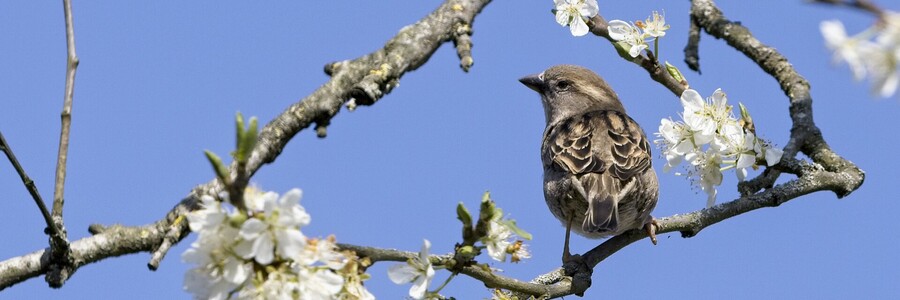Decline of almost 20 per cent
Over the past 40 years, the number of breeding birds in Europe has declined sharply - This is shown by a study by scientists from the British bird conservation organisation RSPB and the Czech Society for Ornithology, who analysed data from 378 of the 445 bird species native to the EU. The result: according to the study, 18 to 19 percent of Europe's breeding birds have disappeared since 1980, which corresponds to a total of around 600 million birds. The total decline is made up of a combination of species that are increasing in numbers, where there are about 340 million more birds than in 1980, and species that are decreasing in numbers, where there has been a loss of about 900 million birds. Previously common bird species are particularly affected: the starling, for example, has declined by 75 million birds, while 68 million birds of the skylark have disappeared.
Decline mainly due to agriculture
Eight species account for about 70 per cent of the total 900 million birds lost: House Sparrow, Yellow Wagtail, Starling, Skylark, Chaffinch, Whitethroat, Linnet and Tree Sparrow. The reasons for the declines are manifold. On the one hand, the lack of food and air pollution in the cities are causing problems for the birds, but on the other hand, changes in agricultural policy and the resulting changes in the management of agricultural land are also contributing to the decline in populations.
Many of the species whose populations are declining the most are species associated with agriculture. According to the study, it is well documented that policy-driven changes in the use of our farmland for food production are associated with declines in biodiversity. For example, there is evidence of the decline of birds in agriculture after countries joined the EU and introduced the Common Agricultural Policy (CAP).
This makes it all the more important to use the possibilities to manage agricultural land in the interest of nature and to make food production nature-friendly. One possibility for this would be, for example, dynamic agroforestry.
Nature conservation an important component of species conservation
Nature conservation, and with it species conservation, is often equated with saving rare species from extinction. However, it is equally important to restore decimated populations of species that are still common. These species also play important roles in our ecosystems, and the loss of these species can cause damage to ecosystems and their functions. The loss of hundreds of millions of birds is therefore also likely to have ecosystem impacts, for example in terms of the loss of pest control on agricultural land.

